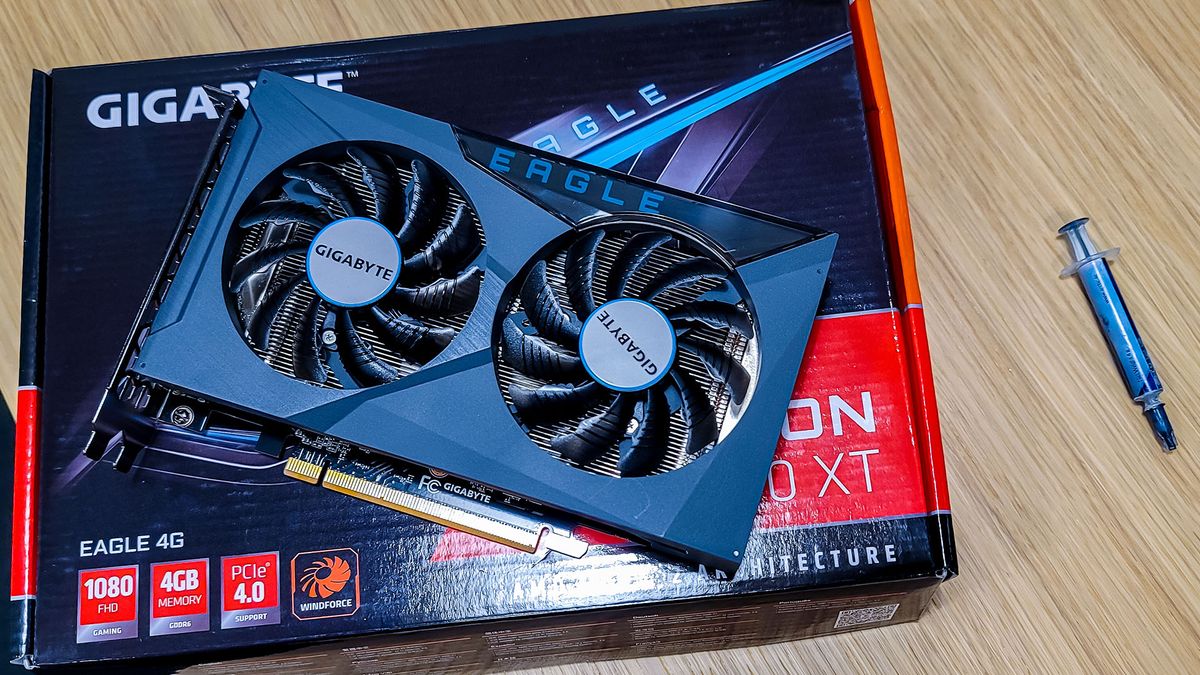Graphics card sales for 2021 might shock you – but they're good news for AMD
‘Growing popularity of PC gaming’ has helped drive robust sales

PC graphics card sales were up strongly last year according to a new piece of research, and the AIB or add-in board (meaning desktop graphics card) market grew to a value of $51.8 billion (around £40 billion, AU$68 billion) in 2021.
This comes from Graphic Speak (a publication of analyst firm Jon Peddie Research or JPR), and the report observes that in Q4 2021, shipments numbers of GPUs were up 29.5% compared to the same quarter in 2020, which is quite a boom (they were also up 3% on the previous quarter). In total, $13.5 billion (around £10 billion, AU$18 billion) worth of graphics cards were shipped in the final quarter of last year.
AMD actually gained more ground than Nvidia in Q4 2021, interestingly, with Team Red’s graphics card shipments up 35.7% year-on-year, whereas Nvidia didn’t make quite the same level of progress, albeit still managing very robust growth of 27.7%.
Team Green still remains by far the dominant player for discrete desktop GPUs, of course, holding 77.2% of the market.
Analysis: AMD turning the graphics card tide?
Nvidia generally holds around an 80% desktop graphics card market share as per JPR’s regular figures, although in recent times it has reached as high as 83%. That said, we’ve seen it drop below 80%, too, but 77% is about the leanest market share figure we have witnessed in a while – and it’ll be interesting to see if AMD can further leverage any more sales momentum here.
Team Red does, of course, have a trio of refreshed RDNA 2 GPUs rumored to be close to arrival – along with fresh cheaper RX 6000 series models, too – and that could propel AMD further forwards, maybe even attacking to drive Nvidia below the 75% mark. A 25% share is as good as we’ve seen AMD do in recent times, going by JPR’s stats (that was back at the start of 2020), and just maybe that could be bettered in the near future.
The report also notes that PC gaming is getting more popular, and is partly responsible for the overall growth in GPUs, stating that: “With the help of the rise of esports and the growing popularity of PC gaming, AMD and Nvidia have been reporting record game segment revenues over the past quarters.”
Get daily insight, inspiration and deals in your inbox
Sign up for breaking news, reviews, opinion, top tech deals, and more.
Of course, discrete desktop graphics cards are not the sole preserve of PC gamers, as they are also used in professional settings (workstations or servers), and let’s not forget crypto-mining (even though we might want to). The latter was certainly a strong driver of GPU sales last year, and part of the reason why while more cards may have been shipped, it certainly wasn’t easy to buy the current-gen GPU you wanted to slot into your PC.
Crypto sales are, however, now on the wane, or that’s certainly the prevailing sentiment, and coupled with slowly recovering supply levels, we are finally seeing graphics card prices normalize somewhat, with that trend expected to continue. Don’t forget that Intel’s entry to the graphics card market will soon make big waves, too, in terms of supply, and hopefully pricing with its Arc cards (coming to laptops first, but desktops as well at some point in Q2).
Via Tom’s Hardware
Darren is a freelancer writing news and features for TechRadar (and occasionally T3) across a broad range of computing topics including CPUs, GPUs, various other hardware, VPNs, antivirus and more. He has written about tech for the best part of three decades, and writes books in his spare time (his debut novel - 'I Know What You Did Last Supper' - was published by Hachette UK in 2013).

Here's just how thin the iPhone 17 Air could be – and it's thinner than the rumored Galaxy S25 Slim

Beard trimmer vs electric shaver: what’s the difference, and which should you buy?

I've spent 10 years with Apple Watch, and after 10 minutes with the Galaxy Watch Ultra, I can't believe Samsung skipped this feature